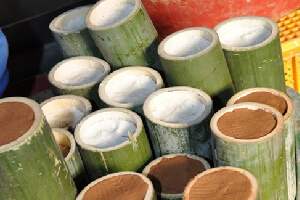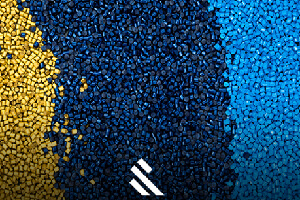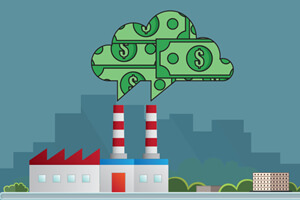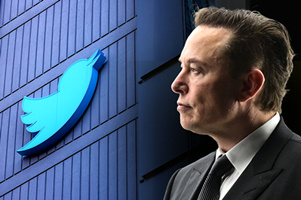Chemical Recycling: The End of Plastic Waste?
Narrator: The world is choking on plastic waste. Less than nine per cent of it is recycled.
I’m on the trail of an emerging industry which promises to change all that. Starting in Merseyside, a key U.K. chemical hub and home to a pioneering plastic recycling business.
Narrator: Hi, Alex.
Alex Guslisty and Toby Moss: Hi. Good to meet you.
Narrator: Toby. Hi.
Used tyres are a big part of the plastic waste problem. Typically, 24 per cent plastic, around half a billion are dumped every year. Like most plastics, the polymers in tyre rubber come from crude oil. It takes 30 litres of it to make just one standard car tyre.
When you think about tyres, you tend to think about rubber, you don’t think of the oil that’s contained within them.
Alex Guslisty: Wouldn’t it be amazing if we could reverse manufacture them back into crude and then use that crude to manufacture new plastics?
Narrator: That reverse manufacture is chemical recycling, separating complex waste like old tyres back into original components that can be reused to make new products over and over again, a so-called “circular economy”.
The first step is mechanical: shredding, separating and pulverising. Once the metal and textiles are stripped away, the tyre shreds are broken down and sorted into exact, uniform-sized pieces.
Alex Guslisty: Right now, we really want to learn how to control that reaction to produce valuable products out of the other end.
Narrator: That other end is the all-important chemical reactor. It’s just been delivered from Europe, and I’m here to help unveil it, the next big step from small-scale experiments to commercial processing. Once connected, this machine will break down tyre rubber by heating it in the absence of oxygen – a thermochemical process called pyrolysis.
Toby Moss: It increases the temperature up to 400 degrees, and the rubber starts turning into oil. At that point, you get separation between the oil, the gas and the solid.
Narrator: Pyrolysis isn’t new, but by fine-tuning the process, Big Atom believes it can make commercially-viable products from the oil and carbon powder extracted from old tyres.
Toby Moss: Half of the components in here can be used to make a biofuel. The other half of the components in here can be used to make new synthetic rubber or plastics. This goes straight back into tyre manufacture.
Narrator: Gas is also produced, which can be fed back to the generators powering the reactor. Right now, most of this rubber is sold for reuse in applications like road or play surfacing, but the company aims to be chemically recycling it on a commercially-viable scale by 2022, and it’s not alone.
A few hours’ drive away, another operator is preparing to launch an intriguing alternative.
I’m now 200 kilometres south in Swindon at a recycling centre, because this is precisely where another company wants to put mobile plants, to process the plastic that we currently throw away.
Narrator: Adrian.
Adrian Griffiths: Hi, hello, Charlotte.
Narrator: Pleased to meet you.
Adrian Griffiths: Very nice to meet you.
Narrator: Likewise.
Now, ten years into research and development, Recycling Technologies is targeting complex, often contaminated food packaging that can’t be recycled mechanically.
Adrian Griffiths: It’s films, and it’s…it’s crisp packets, and it’s just all the type of plastics which normally people don’t do anything with, other than landfilling them or burning them. We have to really stop doing this, we can’t keep putting carbon into the atmosphere by burning materials. All plastic, even the waste plastic that we normally think is waste plastic, it’s actually very valuable material.
Narrator: I’m led through a pyrolytic process, similar to that used in other experimental plants, which promises to extract that value from plastic rubbish. It’s heated and turned into gas. Cooling down in stages, the gas separates into the ingredients the plastic was made from.
Perhaps we could take a look at what comes out the other end?
Up to 80 per cent of the waste fed into the plant is recovered, converted and ready to be used to make new products.
Adrian Griffiths: So this could become food-grade plastic. This could become crisp packets or yoghurt pots or whatever again.
Narrator: It’s a clever process, but it begs the question, shouldn’t we all just stop using so much plastic?
Adrian Griffiths: What’s the alternative? If you use glass, it’s going to be a much higher carbon footprint, if you use metal it’s going to be a much higher carbon footprint. People don’t realise that sometimes a paper bag can be two and a half times the carbon footprint of a plastic bag.
Narrator: The system has its limitations. It isn’t built to process PET and other mechanically-recyclable plastics, and it can’t handle the chlorine in PVCs. But it can process 7,000 tonnes a year and is designed to be mass-produced in modular form.
Adrian Griffiths: By making those Lego bricks if you like, and then clipping those things together, you get yourself a plastic processing machine very, very easily.
Narrator: One commercial plant is in construction. The ambition is to build 200 a year. Chemical recycling is gaining momentum, and investors who see profit in the circular processing of plastic waste.















